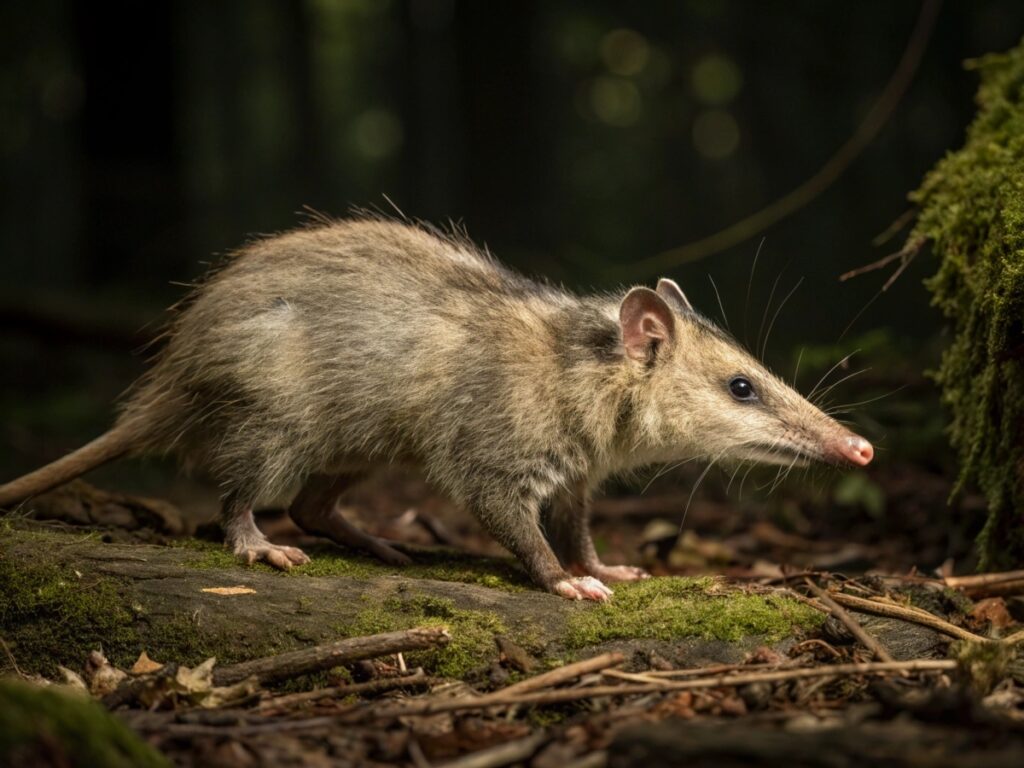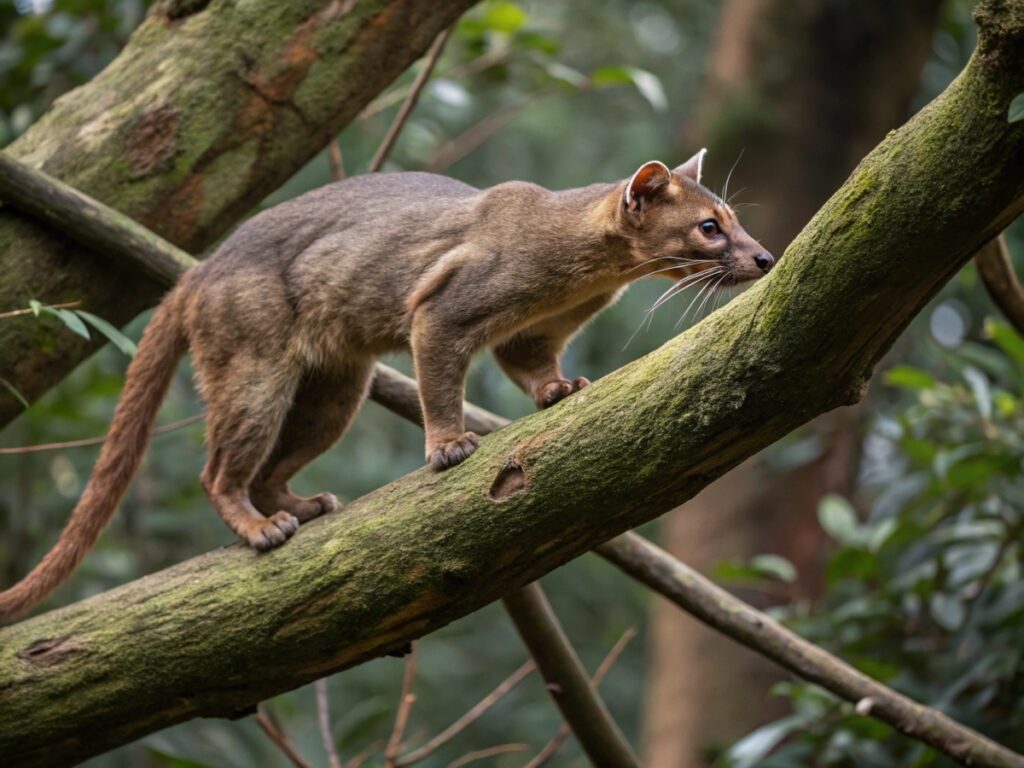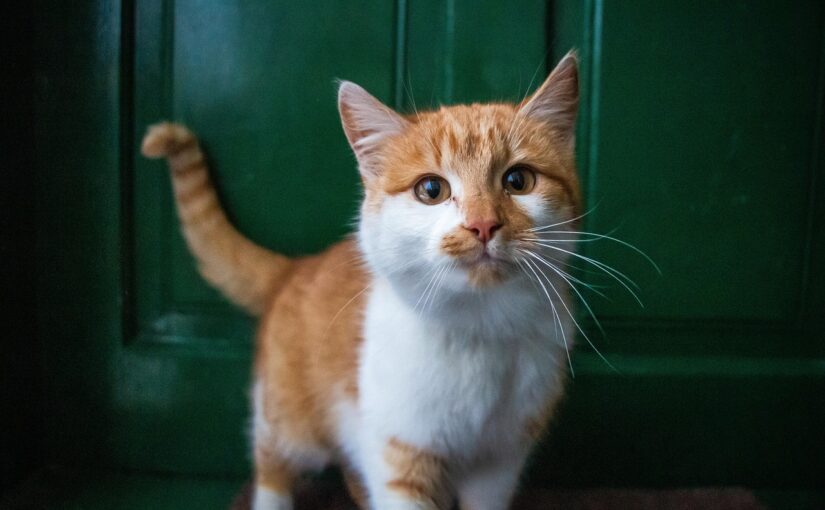Cats are ancient travelers in the story of life on Earth. Modern cats, in all their forms, have been around for at least ten million years. Their extraordinary adaptability is the secret to their success, allowing them to spread far and wide. From lions on the African plains to snow leopards perched high in the Himalayas, from desert sand cats to the tabby curled up on your couch, members of the cat family have managed to thrive almost everywhere.
When you meet the gaze of a housecat, you are staring not just into the present but into deep history. That steady stare, that silent calculation of whether you are friend, foe, or food, is the product of sixty-five million years of refinement. Cats are evolutionary masterpieces, hunters so effective that they hardly changed in body shape for over a million years. From the roar of a lion to the purr of a kitten, the family of cats is at once diverse and unified.
Today cats can be found in nearly every corner of the globe, from icy northern forests to tropical jungles and arid deserts. For a long time, the only major places without cats were Australia and a few remote islands. That changed when humans carried domestic cats with them, intentionally or not, ensuring that felines reached nearly every environment the planet has to offer.
But where did cats come from? Their story begins long before whiskers, claws, and tails were the recognizable trademarks of the family we know today. To meet their ancestors, we need to travel far back in time, to an era right after the demise of the dinosaurs.
The Tiny Predator Who Started It All
Around 65 million years ago, the dinosaurs had just vanished, leaving open ecological niches ready to be filled. Among the mammals that stepped into this new world was a small insect-eater that looked not unlike a modern shrew. This little creature, known as Cimolestes, is the distant ancestor of all carnivorous mammals, including cats. Its teeth already showed signs of evolving into tools for slicing meat rather than just crunching insects. In a sense, Cimolestes was the pioneer of carnivory among mammals.

One might whimsically imagine Cimolestes nipping at the tail of a baby dinosaur, though no one was there to capture the moment on camera. What we do know is that this tiny mammal set the stage for the rise of predators who would dominate the world long after.
Creodonts and Miacids: The Step Between
From Cimolestes came two groups of predators that no longer exist today. First arrived the creodonts, about half a meter long, who ate fish and filled many of the hunter’s roles in ancient ecosystems. They were eventually replaced by another group: the miacids.
Miacids were small, forest-dwelling creatures that appeared around 54 million years ago. Some were weasel-like and skittered through the trees, while others were more grounded, trekking along the forest floor. These little hunters are the true ancestors of modern carnivores. From them came two important branches: cat-like predators and dog-like predators. Without miacids, there would be no cats, no wolves, and no bears roaming Earth.
Dinictis, Proailurus, and the Dawn of Cats
If you met a Dinictis in the wild about 37 million years ago, you might recognize something strangely familiar about it. About the size of a lynx, Dinictis sported the sharp, cutting teeth of a predator clearly heading down the cat family’s evolutionary path. Its brain, however, was much smaller than that of modern cats, leaving more evolutionary space for bigger teeth.

From Dinictis branched off Proailurus, literally meaning “before the cats.” Proailurus lived in Eurasia between 34 and 23 million years ago. It was only a little larger than today’s housecat and built for climbing. With its relatively short legs, long body, flexible tail, and claws that could at least partly retract, it prowled the trees and ambushed prey from above. Proailurus set the stage for one of the most important transitions in feline history.
Enter Pseudaelurus
Around 20 million years ago a descendant of Proailurus made its appearance. Known as Pseudaelurus, or “pseudo-cat,” this animal is considered the first real cat. Unlike its tree-loving ancestor, Pseudaelurus was more terrestrial. It developed the traits that are unmistakably feline: a flexible spine, powerful hind legs longer than the front, razor-sharp teeth, and the grace of a predator walking on its toes.
At the same time, climates were changing. The Miocene period brought a drying world, with forests retreating and sprawling grasslands expanding. Herds of hoofed animals flourished in these new habitats, and with them came new opportunities for predators. Cats diversified alongside their prey. Pseudaelurus even crossed the Bering land bridge into North America, bringing the feline lineage into a new world. Fossils of these early cats have been found in the La Brea tar pits of California, testifying to their success.
Three Branches: Panthers, Wildcats, and Saber-Tooths
Pseudaelurus gave rise to three distinct lineages.
The first included the pantherine cats, the mighty big cats such as lions, tigers, and leopards. The second produced the smaller feline cats, which today include the domestic cat as well as wild relatives like servals, ocelots, and lynxes. The third group gave rise to one of the most legendary predators in natural history: the saber-toothed cats.
Smilodon: The Saber-Tooth’s Reign
Few prehistoric animals capture the imagination like Smilodon, the formidable saber-toothed cat. Living as recently as 10,000 years ago, Smilodon was a beast the size of a lion but built even more powerfully, weighing nearly half a ton. Its most famous feature, of course, was its massive saber-shaped canines, growing up to fifteen centimeters long.

These teeth were both a gift and a curse. They were perfectly adapted for slashing through tough hide and muscle but also fragile, breaking more easily than ordinary teeth. Smilodon compensated with the ability to open its jaw extraordinarily wide, to nearly 120 degrees, allowing those giant fangs to strike effectively. Surprisingly, its bite force was weaker than that of a lion.
Despite their power, the saber-toothed cats disappeared. The reasons remain mysterious. Some scientists suggest that climate change caused the decline of the large herbivores they hunted, such as mammoths. Others believe that more modern big cats outcompeted them with quicker movements and sturdier teeth. Whatever the cause, these fearsome cats that once terrified early humans vanished forever.
Thirty-Seven and Counting
When the saber-toothed cats faded away, smaller, swifter, and smarter cats rose in their place. These survivors and innovators became the foundation of the roughly thirty-seven recognized feline species living today. Some of these species are famous, others elusive and rarely seen. Exactly how many exist depends on the expert you ask since classification is anything but straightforward. Unlike dogs, which all trace their lineage to a single ancestor, the wolf, domestic cats are not separate from their wild relatives. A domestic cat is simply a member of the same continuum of wildcats, making it trickier to define where the wild ends and the “housecat” begins. Domestic cats and feral cats often interbreed with wild populations, blurring the boundaries even more.
This continuity offers a stunning insight: while other mammals have changed almost unrecognizably from their distant predecessors, cats remain strikingly similar to their ancient ancestors. In fact, the skeleton of a small modern cat is virtually indistinguishable from fossils more than a million years old. Looking at a cat today is like gazing back in time.
The renowned British paleontologist Alan Turner once remarked that a housecat can be considered a miniature version of a lion or leopard. On the flip side, you could just as easily argue that lions and leopards are scaled-up housecats. This structural continuity makes cats extraordinary: evolution has found a body plan so efficient that it hardly needed to change.
Yet there is still plenty we do not know about many feline species. The smaller cats especially remain shrouded in secrecy. They are often nocturnal, solitary, and exceptionally good at vanishing into their environments. In jungles, deserts, and mountains, these diminutive hunters slip through the night unseen, their lives largely unknown to science.
The Big Three Cat Lineages
Within the cat family, scientists recognize three major genera. Each represents a unique path in feline evolution.
The Roaring Cats: Panthera
The most iconic members of the cat family belong to the genus Panthera. These are the so-called big cats, lion, tiger, leopard, jaguar, and snow leopard. All share origins at least 10.8 million years ago. Over time the genus diversified. About 9.4 million years ago, a branch of pantherine cats spread in Africa, eventually giving rise to lions and leopards. Later, around 8.5 million years ago, another split brought forth the group including caracals, servals, and related species.
The Fleet Specialist: Acinonyx
Most genera contain many species, but Acinonyx has only one solitary representative: the cheetah (Acinonyx jubatus). Isolated in its uniqueness, the cheetah claims its own branch of the feline family tree. Unlike other cats, the cheetah cannot fully retract its claws. Its body is built for raw speed rather than stealth. Thanks to genetic studies, we now know cheetahs are closely related to pumas, an unexpected connection that stretches across continents. It seems that when it comes to cats, even the loneliest branches of the family still share hidden kin.
The Versatile Hunters: Felis
Finally, we come to the genus Felis, host to the domestic cat and most of the smaller cats. Included here are the European wildcat (Felis silvestris), the African wildcat (Felis lybica), the cougar (Felis concolor, also called the puma or mountain lion), the lynx, the bobcat (Felis rufus), and many others.
The name itself has a long history. For the Romans, felis was a general term for small carnivores of a yellowish coat, not reserved exclusively for cats. Around the year 200, Romans began using cattus, the root of the word “cat” in many modern languages, which specifically referred to the animal we think of as the cat today.
Purr or Roar: Why Not Both?
One of the most fascinating divisions in the feline world has nothing to do with size but rather with voice. Cats seem to have inherited a strange evolutionary trade-off: you can purr, or you can roar, but you cannot do both.
Big cats like tigers, lions, leopards, and jaguars have flexible structures in the throat that allow them to make the deep, rolling roar that chills the spine of anyone within earshot. But that very flexibility prevents them from producing the steady vibrations of a purr. At best, some tigers and leopards emit a kind of one-way rumble that vaguely resembles purring during exhalation, but it lacks the continuous two-way cycle of the housecat.
Smaller cats have a stiffer bone called the hyoid in their throat. This structure vibrates when they breathe, creating the characteristic purring sound that people find so soothing. Unlike a roar, purring can continue indefinitely, sometimes for hours, often delivered with a closed mouth. Scientists are still working out the exact mechanism. Some believe it is caused by oscillating laryngeal muscles, others suggest it is the vibration of additional folds in the vocal cords known as “false vocal cords.”
Whatever the origin, the effect is undeniable. Purring can calm kittens, signal relaxation, or even stimulate physical healing. Some researchers suspect that the vibrations may promote bone repair in cats. For humans, the sound is a near-universal signal of comfort, bonding us to these animals in ways evolution may never have anticipated.
When Cats Hunted Us
The overlap between humans and cats reaches back into deep history. Early humans were not just observers of feline grandeur but also their prey. In Africa, during the so-called golden age of cats, our ancestors shared their landscape with predators beyond imagination. Giant crocodiles, monstrous eagles, and saber-toothed killers all took their turn hunting the first hominids. Still, cats were among the most feared.
Evidence from the Swartkrans cave near Johannesburg reveals how closely intertwined human and feline history has always been. Fossilized primate bones, including the skull of a young Australopithecine, bear puncture marks that match perfectly with leopard fangs. It seems that leopards dragged our distant relatives into caves, not unlike how modern cats drag prey into hidden nooks. In a chilling twist, without these predatory encounters, we might not know nearly as much about early humans today.
The Rise of Modern Cats
As the world moved into the more recent epochs, new cat species arose. Around 2.5 million years ago in the Pliocene, the first species of the modern genus Felis appeared: Felis lunensis. These adaptable hunters spread into various new habitats.
From this lineage came the wildcats of Europe, Africa, and Asia. The European wildcat emerged about 250,000 years ago, while the African wildcat, Felis silvestris libyca, appeared perhaps 20,000 years ago. Small and striped, with the fierce independence still found in their descendants, these African wildcats would eventually give rise to the domestic cat.
From Wild Hunter to Housemate
The leap from wild predator to household companion remains one of the great transformations in animal history. Unlike dogs, who were actively domesticated for tasks such as hunting and guarding, cats likely moved in on their own. Early human settlements with their stores of grain attracted rodents. Where rodents gathered, cats followed. In exchange for rodent control, humans tolerated, and eventually welcomed (and worshiped), them.
Over time, cats slinked closer to the fire, moving from barn to doorstep to bed. The African wildcat thus gave rise to the most widespread feline of all: the domestic cat. Today domestic cats outnumber many of their wild relatives by the millions, continuing the ancient feline story in homes and cities across the globe.
A Story Still Unfolding
The saga of cats stretches from shrew-like insect eaters in the shadows of dinosaurs to the kingly lions of Africa and the contented housecats curled in sunny windows. Throughout their history they have survived climatic upheavals, continental drifts, and fierce competition. They have gone from terrifying predators that stalked our ancestors to beloved pets we pamper daily.
Though cats may appear timeless, evolution has certainly not finished with them. Speculative biology even imagines what might come millions of years from now. In the book After Man: A Zoology of the Future, author Dougal Dixon envisions the “Striger,” a hypothetical descendant of cats some 50 million years ahead. In this imagined world, humans are long gone, but cats endure. The Striger resembles a tiger but is adapted to swing through trees with a grasping tail and extra mobility in its claws. Whether Dixon’s vision ever comes true is beside the point, the lesson is that evolution carries on. Cats today are snapshots, not final forms.
Teaser image by Szabolcs Molnar.
If you find joy in these tales of twitching whiskers and gleaming eyes, consider helping keep Whiskerito.com alive and purring. Your donation supports thoughtful research, engaging content, and the warm, wonder-filled community that makes this space what it is.
